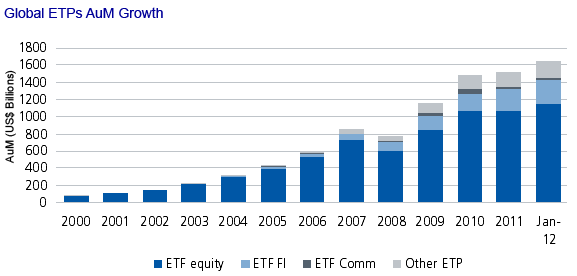Exchange-Traded Funds: Growth and Challenges
Abstract
The exchange-traded product market has made significant progress in the last decade. Assets under management have increased more than tenfold: from US$146 billion in 2002 to US$1.5 trillion in 2011. There has been a proliferation in the number of funds, and new funds are being regularly introduced. However, future growth is no longer something the industry can take for granted.
In a new report, Exchange-Traded Funds: Growth and Challenges, Celent discusses the evolution of the global exchange-traded product (ETP) market. The rapid growth of ETPs has attracted a lot of attention, from both competitors and regulators. There has been an ongoing debate about whether the growth of ETPs has been at the expense of the mutual fund industry or if ETPs are breaking new ground and attracting investment that might have gone elsewhere. Within the ETP market, there has been an ongoing tussle for supremacy between the managers of physical ETPs and the synthetic ETPs (which use derivatives).

“The ETP market is becoming increasingly competitive, and more niche products are being created,” says Anshuman Jaswal, Celent Senior Analyst and author of the report. “The potential for active ETFs makes this an interesting space to follow in the coming months.”
This report begins with a market overview that discusses the breakdown of global ETP assets and the growth of new assets. This is followed by a discussion of the merits of investing in ETFs as compared to passive mutual funds. At the end of this section, Celent considers the evolving trends in the ETF industry and looks at the success rate of introduction of new funds.
The report has a section on active ETFs that looks at the current state of such funds and the possibility of future growth for active ETFs. We look at physical and synthetic ETFs and consider the leading markets and the growth of synthetic ETFs. After this, the report examines the retail segment of the ETF market and discusses the attractiveness of ETFs, which have traditionally targeted institutions, for retail clients. Finally, the report looks at the regulatory environment in markets such as the US, Europe, and Asia to help predict the possible growth trajectory for the ETF markets in the next few years.

